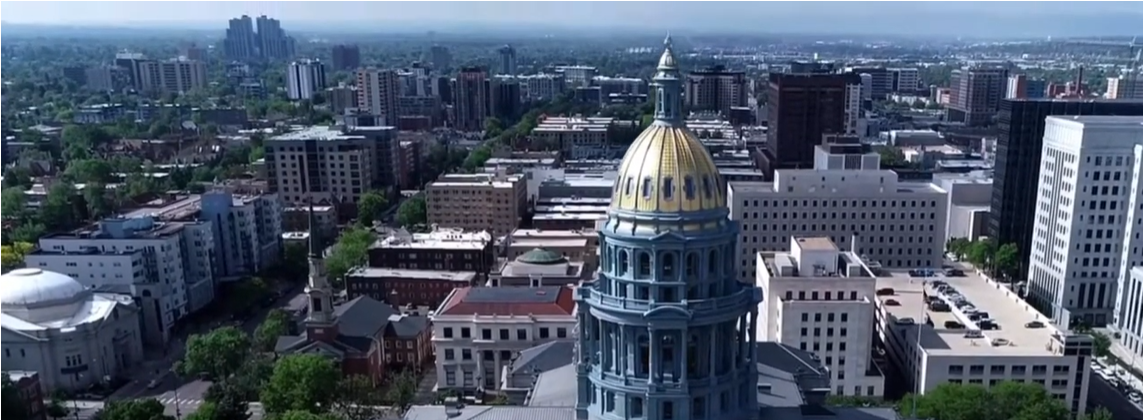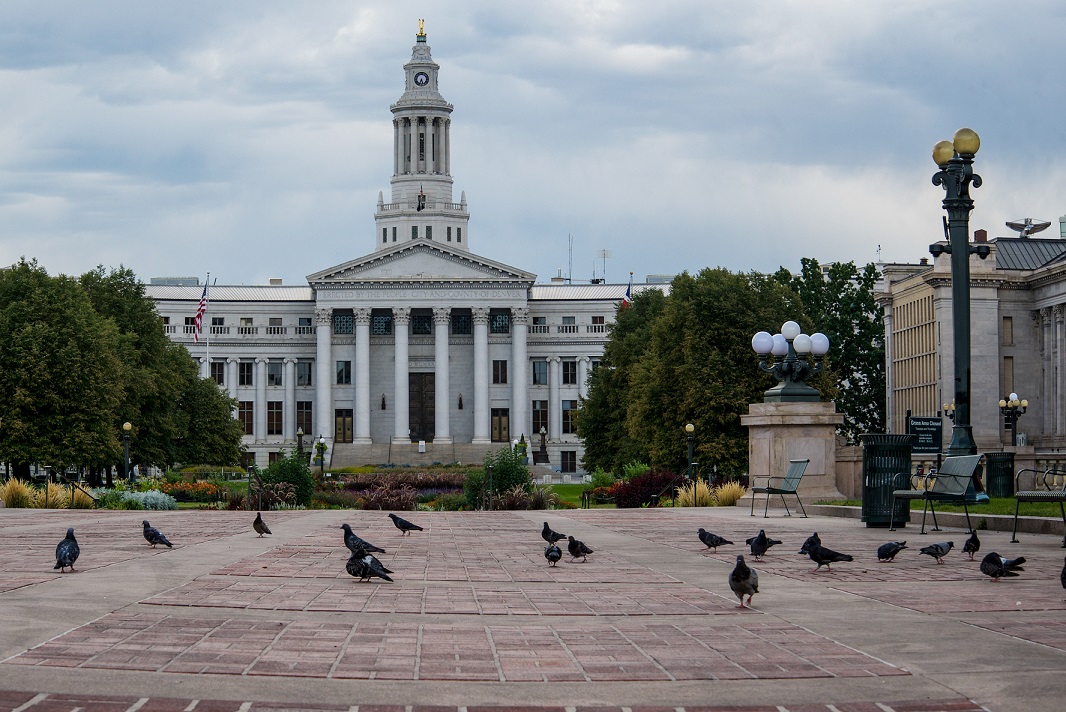Denver, the Mile High City, boasts a diverse and captivating architectural landscape that reflects its storied history and cultural evolution. From its humble beginnings as a frontier town to its status as a modern metropolis, Denver’s architecture stands as a testament to the city’s growth and resilience. This article takes readers on a journey through the historical landmarks and architectural gems that define Denver’s unique character, exploring iconic buildings, preserved districts, and cultural institutions that showcase the city’s rich heritage and its commitment to preserving its past while embracing a vibrant future.
The Victorian Era: Denver’s Early Architectural Footprint
The Victorian era left an indelible mark on Denver’s architectural landscape, as the city’s growth coincided with this influential period. Elegant Victorian-style homes and buildings, characterized by ornate detailing and asymmetrical facades, graced the city’s early neighborhoods. Today, the Curtis Park Historic District and the San Rafael Historic District offer a glimpse into Denver’s Victorian past, preserving a collection of well-preserved homes from this era. Notable examples include the Molly Brown House Museum, a testament to the life of the “unsinkable” Titanic survivor and Denver philanthropist, Margaret “Molly” Brown.
Union Station: A Historic Transportation Hub
One of Denver’s most iconic landmarks, Union Station, epitomizes the city’s architectural prowess and historical significance. Built in 1881, this grand Beaux-Arts-style building served as the main railroad terminal and played a pivotal role in the growth of Denver as a transportation hub during the late 19th and early 20th centuries. Today, Union Station has been meticulously restored and renovated, retaining its historic charm while accommodating modern transportation needs. It serves as a bustling transportation center, a gathering place for locals and tourists, and a luxurious hotel, embodying the seamless fusion of history and modernity in Denver’s architectural landscape.
The Colorado State Capitol: A Symbol of Democracy
The Colorado State Capitol, located on Capitol Hill, stands as a symbol of Denver’s political importance and architectural grandeur. Inspired by the United States Capitol in Washington, D.C., the building’s distinctive neoclassical design features a golden dome, adorned with real gold leaf, which sparkles under the Colorado sunshine. Completed in 1908, the Capitol houses the offices of the Governor, the Colorado General Assembly, and other state government officials. Its grand interiors include beautiful murals and stained glass, telling the story of Colorado’s history, making it a must-visit destination for both history enthusiasts and architecture aficionados.
Larimer Square: Denver’s Historic Heart
Larimer Square, nestled in the heart of downtown Denver, holds the distinction of being the city’s oldest and most historic block. Once a bustling center of commerce during Denver’s early days, the area fell into disrepair but was revitalized in the 1960s as part of Denver’s urban renewal efforts. Today, the restored block is a vibrant and trendy destination, preserving its historic charm while accommodating modern restaurants, boutiques, and cultural spaces. The Square’s blend of preserved 19th-century buildings and contemporary amenities provides a unique experience, showcasing Denver’s commitment to preserving its architectural heritage amidst urban development.
The Brown Palace Hotel: Timeless Elegance
The Brown Palace Hotel, an enduring symbol of timeless elegance and luxury, has been a cornerstone of Denver’s architectural heritage since its opening in 1892. Designed in the Italian Renaissance-style, the hotel has hosted numerous luminaries and dignitaries, including presidents, movie stars, and royalty. Its rich history is steeped in tales of intrigue and charm, including secret tunnels and ghost stories. The hotel’s distinctive triangular shape and eight-story atrium, adorned with intricate wrought-iron railings, make it a distinctive landmark in Denver’s skyline, embodying the city’s ability to blend historical significance with contemporary opulence.
Boettcher Mansion: Mountain Retreat in the City
Perched on a hilltop in the Denver Mountain Parks, Boettcher Mansion offers a captivating retreat from the city’s bustling streets. Designed in the Arts and Crafts architectural style, the mansion was completed in 1917 and served as a summer retreat for the Boettcher family, prominent Denver philanthropists. The mansion’s design incorporates elements of nature and rustic simplicity, creating a harmonious connection with its mountainous surroundings. Today, the mansion is a popular venue for weddings and events, inviting visitors to step back in time and experience the beauty of Denver’s mountainous landscape.
The Molly Brown House Museum: Denver’s Titanic Connection
The Molly Brown House Museum, formerly known as the House of Lions, is a historic Victorian home that gained fame through its association with the “Unsinkable” Molly Brown, a survivor of the Titanic disaster. Built in the 1880s, the house showcases a mix of architectural styles, including Queen Anne, Second Empire, and Richardsonian Romanesque. Today, the museum offers guided tours, allowing visitors to learn about the life and legacy of Margaret “Molly” Brown and the Denver of yesteryears. The museum’s preservation efforts stand as a testament to Denver’s commitment to honoring its historical figures and architectural heritage.
Denver Art Museum: A Diverse Architectural Canvas
The Denver Art Museum (DAM) exemplifies Denver’s architectural diversity, comprising several distinct buildings that collectively form a stunning cultural campus. The museum’s original North Building, designed by Gio Ponti and James Sudler, showcases a unique modernist style with its distinctive geometric facade. The Hamilton Building, designed by Daniel Libeskind, features sharp angles and titanium panels, providing a striking contrast to the North Building’s curves. The DAM’s architecture is a reflection of the city’s commitment to art and culture, offering visitors a captivating experience that celebrates both traditional and contemporary expressions of creativity.
History Colorado Center: Embracing Modernity
The History Colorado Center stands as a modern architectural marvel, embodying Denver’s commitment to celebrating its history while embracing innovation. Designed by David Tryba Architects, the building’s contemporary design features a glass façade adorned with vibrant LED lights that illuminate the city’s skyline. The interior offers interactive exhibits and immersive experiences that engage visitors with Colorado’s rich past, showcasing its unique heritage and diverse cultural influences. The History Colorado Center serves as a testament to Denver’s ability to blend history with modernity, offering a compelling narrative that bridges the gap between the city’s past and present.
The Temple Buell Theatre: An Icon of Performing Arts
The Temple Buell Theatre, located within the Denver Performing Arts Complex, stands as an architectural gem and a symbol of Denver’s dedication to the performing arts. Designed by Harry Weese, the theatre’s modernist design showcases a distinctive curving roof and grand entrance. The theatre is a premier venue for Broadway shows, concerts, and other performances, attracting top talent from around the world. Its acoustics and design provide an exceptional experience for both performers and audiences alike, making it a cherished landmark in Denver’s cultural landscape.
The Ellie Caulkins Opera House: A Symphony of Opulence
The Ellie Caulkins Opera House, located within the Denver Performing Arts Complex, is a masterful architectural work that exudes opulence and grandeur. Designed by Semple Brown Design, the opera house is a fusion of modern and classical elements, showcasing a glass facade that opens up to a grand marble lobby. The theater’s interior is adorned with luxurious materials, intricate details, and a breathtaking chandelier that sets the stage for an unforgettable experience. The Ellie Caulkins Opera House serves as a testament to Denver’s commitment to the arts, offering a world-class venue for opera, ballet, symphony concerts, and other prestigious cultural events.
The Kirkland Museum of Fine & Decorative Art: A Treasure Trove of Design
The Kirkland Museum of Fine & Decorative Art, designed by Olson Kundig, houses a remarkable collection that celebrates Colorado’s artistic legacy. The museum’s architecture is an ode to contemporary design, featuring a modern glass addition that harmonizes with the historic studio of Vance Kirkland. The museum’s extensive collection includes works by prominent Colorado artists, as well as international masterpieces of decorative art and design. Visitors can explore a diverse range of styles, from Art Deco and Arts and Crafts to Mid-Century Modern. The museum is a true testament to Denver’s appreciation for creativity and innovation.
The Four Mile Historic Park: An Ode to Denver’s Pioneer Past
Nestled along the banks of Cherry Creek, the Four Mile Historic Park offers visitors a glimpse into Denver’s pioneer past. The park preserves and interprets Denver’s oldest standing structure, the Four Mile House, built in 1859. This historic landmark is a rare example of early Colorado architecture and serves as a living history museum, hosting events, educational programs, and reenactments. The park’s rustic charm, expansive grounds, and preserved structures create an immersive experience that transports visitors back to the early days of Denver’s settlement and provides a deeper understanding of the city’s frontier roots.
The Governor’s Residence at Boettcher Mansion: A Stately Abode
The Governor’s Residence at Boettcher Mansion, originally built as a private residence in the 1920s, has served as the official residence of Colorado’s governors since 1960. Designed by Fisher & Fisher Architects, the mansion boasts a beautiful blend of Mediterranean and Classical Revival architectural styles. The lush gardens and stately interiors offer visitors a glimpse into the state’s political history and cultural heritage. Guided tours of the mansion provide insight into the lives of the state’s governors and the historical events that have shaped Colorado’s past.
Confluence Park: Nature Meets Urban Design
Confluence Park, located at the confluence of Cherry Creek and the South Platte River, represents Denver’s commitment to harmoniously blending nature with urban design. The park’s masterful architecture features walkways, bridges, and seating areas that provide optimal views of the rivers and the city skyline. The innovative Riverfront Park Pedestrian Bridge, designed by HNTB Corporation, adds a modern touch to the park, offering a seamless connection between the downtown area and the surrounding neighborhoods. Confluence Park’s landscape design and thoughtful architectural elements create an inviting oasis, attracting both residents and visitors alike to enjoy nature’s beauty within the city limits.
Denver’s architecture and historical landmarks are a vibrant tapestry that weaves together the city’s past, present, and future. From its early days as a frontier town to its current status as a dynamic metropolis, Denver’s architecture serves as a testament to its resilience, creativity, and commitment to preserving its cultural heritage. Historical landmarks like Union Station, the Colorado State Capitol, and Larimer Square stand as icons of the city’s past, while modern architectural wonders like the Denver Art Museum and History Colorado Center demonstrate Denver’s innovative spirit. Together, these architectural treasures form a living narrative of Denver’s evolution and enduring charm.

